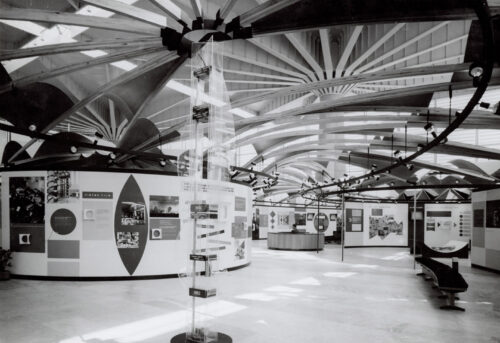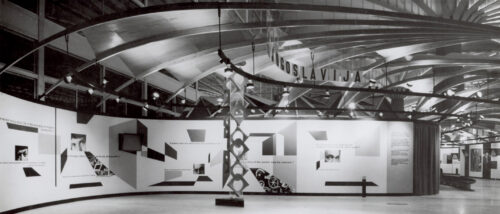Yugoslav pavilion at the International Labour Exhibition in Turin, 1961
The Yugoslav pavilion designed by the Croatian architect and artist Vjenceslav Richter (1917–2002) was a striking example of both formal and technical innovation. Located in the spacious interior of the Palazzo del Lavoro by the architect Pier Luigi Nervi, the wave-shaped pavilion consisted of a playful sequence of rooms in geometric shapes. The hinged zigzag roof could be folded up like an accordion for easy transport. Richter replaced the ‘totality’ approach with an ‘open system’ based on additions, iterations, and geometric mutations of the elements, enabling the creation of a dynamic space with visual and spatial interest.
Entitled ‘Man at Work: One Hundred Years of Technical and Social Development’, the Yugoslavian exhibition presented the country’s experiment in ‘socialist self-management’. At the centre of the display was a three-dimensional model, a kind of ‘interactive didactic tool’ with concentric, rotating segments made of Plexiglas that displayed keywords illustrating the tenets of self-managed socialism.

